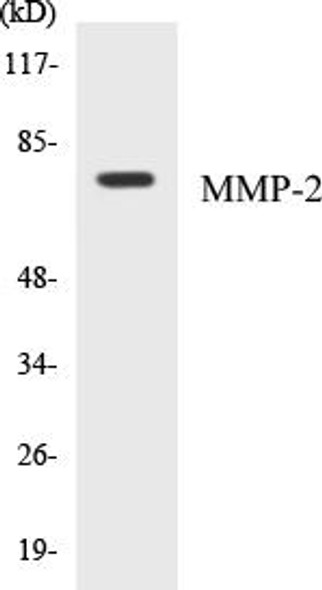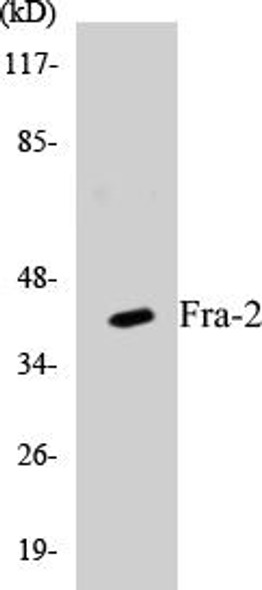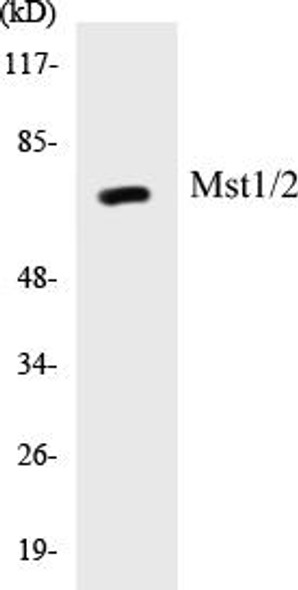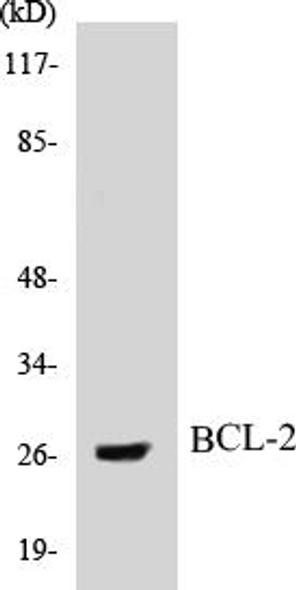Epigenetics and Nuclear Signaling
AP-2 Colorimetric Cell-Based ELISA Kit
- SKU:
- CBCAB00528
- Product Type:
- ELISA Kit
- ELISA Type:
- Cell Based
- Research Area:
- Epigenetics and Nuclear Signaling
- Reactivity:
- Human
- Reactivity:
- Mouse
- Reactivity:
- Rat
- Detection Method:
- Colorimetric
Description
| Product Name: | AP-2 Colorimetric Cell-Based ELISA |
| Product Code: | CBCAB00528 |
| ELISA Type: | Cell-Based |
| Target: | AP-2 |
| Reactivity: | Human, Mouse, Rat |
| Dynamic Range: | > 5000 Cells |
| Detection Method: | Colorimetric 450 nmStorage/Stability:4°C/6 Months |
| Format: | 96-Well Microplate |
The AP-2 Colorimetric Cell-Based ELISA Kit is a convenient, lysate-free, high throughput and sensitive assay kit that can detect AP-2 protein expression profile in cells. The kit can be used for measuring the relative amounts of AP-2 in cultured cells as well as screening for the effects that various treatments, inhibitors (ie siRNA or chemicals), or activators have on AP-2.
Qualitative determination of AP-2 concentration is achieved by an indirect ELISA format. In essence, AP-2 is captured by AP-2-specific primary antibodies while the HRP-conjugated secondary antibodies bind the Fc region of the primary antibody. Through this binding, the HRP enzyme conjugated to the secondary antibody can catalyze a colorimetric reaction upon substrate addition. Due to the qualitative nature of the Cell-Based ELISA, multiple normalization methods are needed:
| 1. | A monoclonal antibody specific for human GAPDH is included to serve as an internal positive control in normalizing the target absorbance values. |
| 2. | Following the colorimetric measurement of HRP activity via substrate addition, the Crystal Violet whole-cell staining method may be used to determine cell density. After staining, the results can be analysed by normalizing the absorbance values to cell amounts, by which the plating difference can be adjusted. |
| Database Information: | Gene ID: 7020, UniProt ID: P05549, OMIM: 107580/113620, Unigene: Hs.519880 |
| Gene Symbol: | TFAP2A/TFAP2B |
| Sub Type: | None |
| UniProt Protein Function: | AP-2 alpha: Sequence-specific DNA-binding protein that interacts with inducible viral and cellular enhancer elements to regulate transcription of selected genes. AP-2 factors bind to the consensus sequence 5'-GCCNNNGGC-3' and activate genes involved in a large spectrum of important biological functions including proper eye, face, body wall, limb and neural tube development. They also suppress a number of genes including MCAM/MUC18, C/EBP alpha and MYC. AP-2-alpha is the only AP-2 protein required for early morphogenesis of the lens vesicle. Together with the CITED2 coactivator, stimulates the PITX2 P1 promoter transcription activation. Associates with chromatin to the PITX2 P1 promoter region. Binds DNA as a dimer. Can form homodimers or heterodimers with other AP-2 family members. Interacts with WWOX. Interacts with CITED4. Interacts with UBE2I. Interacts with RALBP1 in a complex also containing EPN1 and NUMB during interphase and mitosis. Interacts with KCTD1; this interaction represses transcription activation. Interacts (via C-terminus) with CITED2 (via C-terminus); the interaction stimulates TFAP2A- transcriptional activation. Interacts (via N-terminus) with EP300 (via N-terminus); the interaction requires CITED2. Belongs to the AP-2 family. 3 isoforms of the human protein are produced by alternative splicing. |
| UniProt Protein Details: | Protein type:DNA-binding; Transcription factor Chromosomal Location of Human Ortholog: 6p24 Cellular Component: nucleoplasm; Golgi apparatus; centrosome; intracellular membrane-bound organelle; cytoplasm; nucleus Molecular Function:protein dimerization activity; protein binding; protein homodimerization activity; sequence-specific DNA binding; transcription coactivator activity; chromatin binding Biological Process: negative regulation of epidermal growth factor receptor signaling pathway; transcription from RNA polymerase II promoter; embryonic forelimb morphogenesis; neural crest cell development; regulation of neuron differentiation; positive regulation of transcription, DNA-dependent; negative regulation of transcription from RNA polymerase II promoter; palate development; embryonic pattern specification; negative regulation of cell proliferation; sympathetic nervous system development; sensory perception of sound; oculomotor nerve formation; regulation of cell differentiation; epidermis morphogenesis; positive regulation of neuron apoptosis; negative regulation of neuron apoptosis; kidney development; inner ear morphogenesis; trigeminal nerve development; anterior neuropore closure; embryonic cranial skeleton morphogenesis; positive regulation of bone mineralization; embryonic body morphogenesis; forebrain neuron development; positive regulation of transcription from RNA polymerase II promoter; negative regulation of transcription, DNA-dependent; negative regulation of apoptosis; positive regulation of cell migration Disease: Branchiooculofacial Syndrome |
| NCBI Summary: | The protein encoded by this gene is a transcription factor that binds the consensus sequence 5'-GCCNNNGGC-3'. The encoded protein functions as either a homodimer or as a heterodimer with similar family members. This protein activates the transcription of some genes while inhibiting the transcription of others. Defects in this gene are a cause of branchiooculofacial syndrome (BOFS). Three transcript variants encoding different isoforms have been found for this gene.[provided by RefSeq, Dec 2009] |
| UniProt Code: | P05549 |
| NCBI GenInfo Identifier: | 135302 |
| NCBI Gene ID: | 7020 |
| NCBI Accession: | P05549.1 |
| UniProt Secondary Accession: | P05549,Q13777, Q5TAV5, Q8N1C6, |
| UniProt Related Accession: | P05549 |
| Molecular Weight: | 47,440 Da |
| NCBI Full Name: | Transcription factor AP-2-alpha |
| NCBI Synonym Full Names: | transcription factor AP-2 alpha (activating enhancer binding protein 2 alpha) |
| NCBI Official Symbol: | TFAP2A |
| NCBI Official Synonym Symbols: | AP-2; BOFS; AP2TF; TFAP2; AP-2alpha |
| NCBI Protein Information: | transcription factor AP-2-alpha; AP2-alpha; activator protein 2; AP-2 transcription factor; activating enhancer-binding protein 2-alpha |
| UniProt Protein Name: | Transcription factor AP-2-alpha |
| UniProt Synonym Protein Names: | AP-2 transcription factor; Activating enhancer-binding protein 2-alpha; Activator protein 2; AP-2 |
| Protein Family: | Transcription factor |
| UniProt Gene Name: | TFAP2A |
| UniProt Entry Name: | AP2A_HUMAN |
| Component | Quantity |
| 96-Well Cell Culture Clear-Bottom Microplate | 2 plates |
| 10X TBS | 24 mL |
| Quenching Buffer | 24 mL |
| Blocking Buffer | 50 mL |
| 15X Wash Buffer | 50 mL |
| Primary Antibody Diluent | 12 mL |
| 100x Anti-Phospho Target Antibody | 60 µL |
| 100x Anti-Target Antibody | 60 µL |
| Anti-GAPDH Antibody | 60 µL |
| HRP-Conjugated Anti-Rabbit IgG Antibody | 12 mL |
| HRP-Conjugated Anti-Mouse IgG Antibody | 12 mL |
| SDS Solution | 12 mL |
| Stop Solution | 24 mL |
| Ready-to-Use Substrate | 12 mL |
| Crystal Violet Solution | 12 mL |
| Adhesive Plate Seals | 2 seals |
The following materials and/or equipment are NOT provided in this kit but are necessary to successfully conduct the experiment:
- Microplate reader able to measure absorbance at 450 nm and/or 595 nm for Crystal Violet Cell Staining (Optional)
- Micropipettes with capability of measuring volumes ranging from 1 µL to 1 ml
- 37% formaldehyde (Sigma Cat# F-8775) or formaldehyde from other sources
- Squirt bottle, manifold dispenser, multichannel pipette reservoir or automated microplate washer
- Graph paper or computer software capable of generating or displaying logarithmic functions
- Absorbent papers or vacuum aspirator
- Test tubes or microfuge tubes capable of storing ≥1 ml
- Poly-L-Lysine (Sigma Cat# P4832 for suspension cells)
- Orbital shaker (optional)
- Deionized or sterile water
*Note: Protocols are specific to each batch/lot. For the correct instructions please follow the protocol included in your kit.
| Step | Procedure |
| 1. | Seed 200 µL of 20,000 adherent cells in culture medium in each well of a 96-well plate. The plates included in the kit are sterile and treated for cell culture. For suspension cells and loosely attached cells, coat the plates with 100 µL of 10 µg/ml Poly-L-Lysine (not included) to each well of a 96-well plate for 30 minutes at 37°C prior to adding cells. |
| 2. | Incubate the cells for overnight at 37°C, 5% CO2. |
| 3. | Treat the cells as desired. |
| 4. | Remove the cell culture medium and rinse with 200 µL of 1x TBS, twice. |
| 5. | Fix the cells by incubating with 100 µL of Fixing Solution for 20 minutes at room temperature. The 4% formaldehyde is used for adherent cells and 8% formaldehyde is used for suspension cells and loosely attached cells. |
| 6. | Remove the Fixing Solution and wash the plate 3 times with 200 µL 1x Wash Buffer for five minutes each time with gentle shaking on the orbital shaker. The plate can be stored at 4°C for a week. |
| 7. | Add 100 µL of Quenching Buffer and incubate for 20 minutes at room temperature. |
| 8. | Wash the plate 3 times with 1x Wash Buffer for 5 minutes each time. |
| 9. | Add 200 µL of Blocking Buffer and incubate for 1 hour at room temperature. |
| 10. | Wash 3 times with 200 µL of 1x Wash Buffer for 5 minutes each time. |
| 11. | Add 50 µL of 1x primary antibodies (Anti-AP-2 Antibody and/or Anti-GAPDH Antibody) to the corresponding wells, cover with Parafilm and incubate for 16 hours (overnight) at 4°C. If the target expression is known to be high, incubate for 2 hours at room temperature. |
| 12. | Wash 3 times with 200 µL of 1x Wash Buffer for 5 minutes each time. |
| 13. | Add 50 µL of 1x secondary antibodies (HRP-Conjugated AntiRabbit IgG Antibody or HRP-Conjugated Anti-Mouse IgG Antibody) to corresponding wells and incubate for 1.5 hours at room temperature. |
| 14. | Wash 3 times with 200 µL of 1x Wash Buffer for 5 minutes each time. |
| 15. | Add 50 µL of Ready-to-Use Substrate to each well and incubate for 30 minutes at room temperature in the dark. |
| 16. | Add 50 µL of Stop Solution to each well and read OD at 450 nm immediately using the microplate reader. |
(Additional Crystal Violet staining may be performed if desired – details of this may be found in the kit technical manual.)






